Mainsail trimming is the key element when looking for good performances on board. A correct trim in the mainsail not only makes your boat more performing but, above all, it is synonym with a well-balanced boat regardless of wind power, sailing points and sea conditions.
This ambitious project inevitably requires two essential things: a correct position of the mainsail, that is angle of the sail to the wind, and a good shape. These two goals can be achieved with the help of a varied set of instruments, including, first of all, the halyard, the sheet, the traveller, the boom vang, and, secondarily, the backstay, the Cunningham and so on, according to the type of boat we use.
On board their normal cruisers, yachtsmen generally trim the mainsail by simply hauling and easing the mainsail sheet according to their sailing point and until the sail is correctly adjusted and the leech ribbons are parallel to the deck. However, it is important to know that mainsail trimming can involve more rigging, too, and this is exactly the aspect that we want to deal with today.

First of all, let’s take care of the mainsail shape by carrying out the first manoeuvre, that is to hoist the sail. Let us make an introductory remark. Even if we’re going to consider sails one at a time, the mainsail and genoa interact with each other and a correct trim of the mainsail is possible when also the fore sail is hauled.
For the time being, let’s simply haul the sheet. The sheet tension should be proportionate to wind power. If its is too taut, the mainsail will show some vertical wrinkles. The same goes for the base because, if it is too tense, it will result in a multitude of horizontal wrinkles.
Mainsheet
The mainsheet is the primary mainsail control. Once it is hauled and with the right tension, the mainsheet can achieve its correct shape. If we haul the sheet, the boom will be inevitably pulled down and, therefore, the twist on the top of the sail significantly reduced. Vice versa, if we ease the mainsheet, the boom will be pulled up and the twist considerably accentuated. In general – unless the sail is so worn-out to look like a shapeless sack – in order to achieve a correct mainsail twist, the top stick should be parallel to the boom.
It follows that, if the top stick is upwind, this means that the sail is little twisted and therefore too closed; conversely, is the top stick is downwind, the sail is too twisted and thus too open.
Correct mainsail twist is an essential aspect because wind speed can be different according to the altitude. The true wind we perceive in the cockpit and, more specifically, at the boom is less powerful than that one we can perceive at the mast top. Depending on the wind power, for a 10/15-metre-high mast, the difference can even touch 20-25%. Of course, this difference also affects the speed and direction of the apparent wind. Hence the need for a correctly twisted mainsail with a good positioning in relation to wind direction and height.
Traveller
Once the mainsail has achieved its correct shape, it is important to give it the correct position to the wind. The traveller is the main control in the sense. It is a relatively modern rigging since it appeared the first time on the Star yachts in ’50s. While the sheet contributes to achieve the best mainsail shape, the traveller is a device that allows for changing the mainsail position.
By moving the traveller, the mainsail indeed moves upwind or downwind while preserving the shape its has just obtained with the help of the sheet. The traveller should be used in concert with the helm. The helmsman, in fact, should recognize an almost imperceptible tendency of the boat to luff. However, if this tendency is too strong, the traveller should be retracted downwind; vice versa, if the boat tends to bear away, the traveller should be moved a little downwind. When taking part to a sailing competition, this trimming should be continuous in order to keep an excellent angle of attack of the wind on the sail. Especially when sailing in gusty conditions, the work of the trimmer is non-stop.
Things change on board a normal cruiser. Often, yachtsmen use only the sheet. The sheet tension, in fact, not only affects the mainsail shape but is also makes the boom move laterally, with the result that the laziest end up giving the mainsheet a dual function: to adjust both the positioning and shape of the mainsail.
Boom vang
If we are sailing upwind on board a normal cruiser, the use of the boom vang is almost non influential. On the contrary, when a boat sails downwind, the boom vang plays a decisive role in controlling the shape of the mainsail since it affects twist according to its position (more twist when it is eased, less twist when hauled) while the sheet determines the orientation of the sail.

Base, halyard and Cunningham
Once the mainsail has achieved a correct shape and position, we can continue to trim the traveller in response to possible changes in wind power. If wind weakens, the traveller can be moved upwind, the base and halyard eased in order to make the sail more concave.
Vice versa, if wind gets stronger, the travelled should be moved downwind in order to reduce the wind pressure on the top. Meanwhile, the halyard should be hauled in order to have a flatter sail. If you boat is equipped with a Cunningham, its use is more beneficial than the simple halyard.
Once these four “rules” are established, it is now up to us to experiment with our own mainsail, using the sheet, the traveller, the halyard, looking at their effects and seizing the best opportunities they offer. After all, sailing even only an half a knot faster than expected is always a little pleasure we can’t resist.
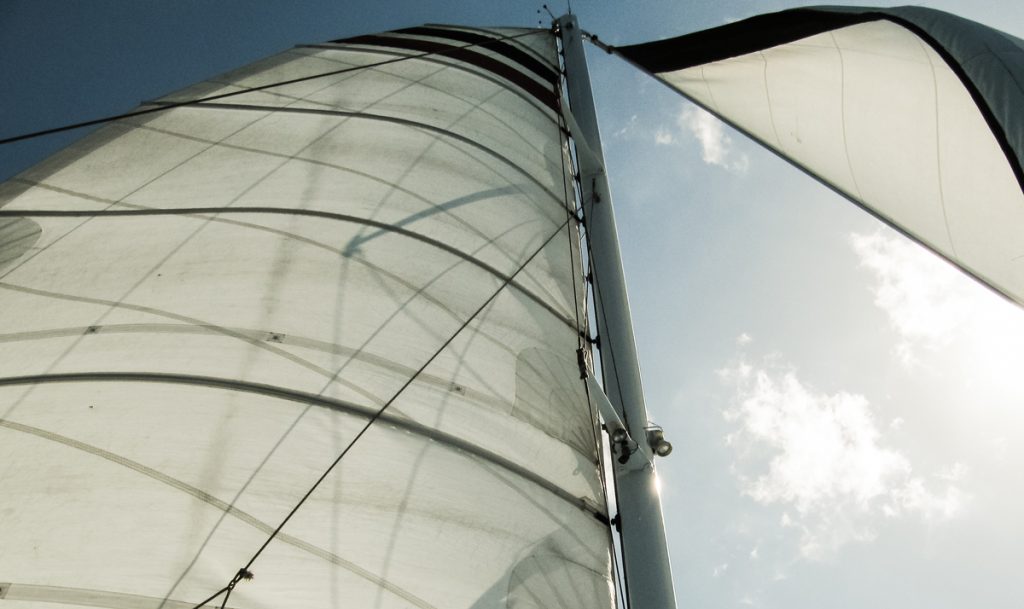




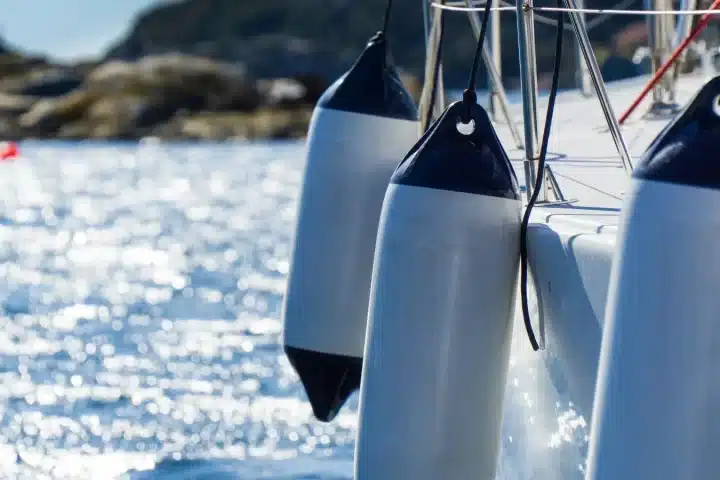

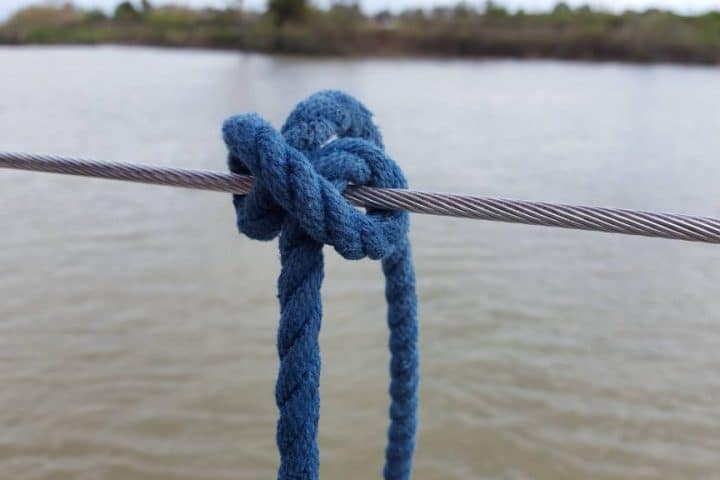
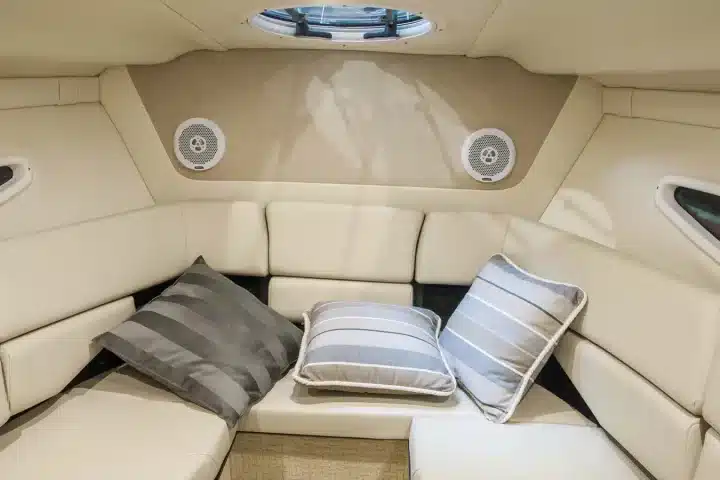
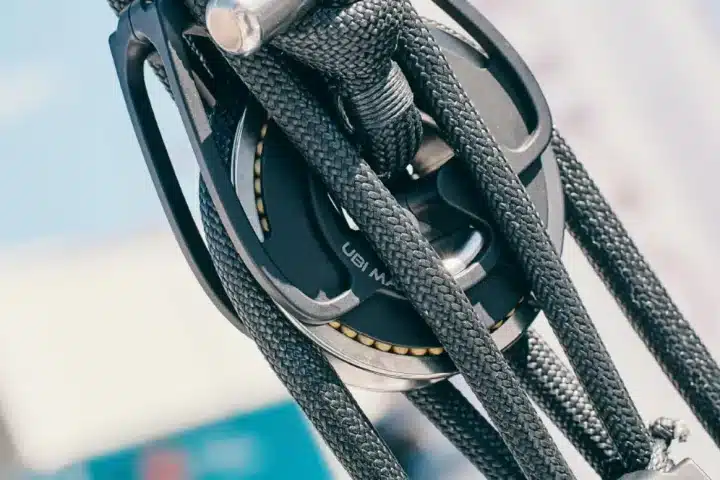
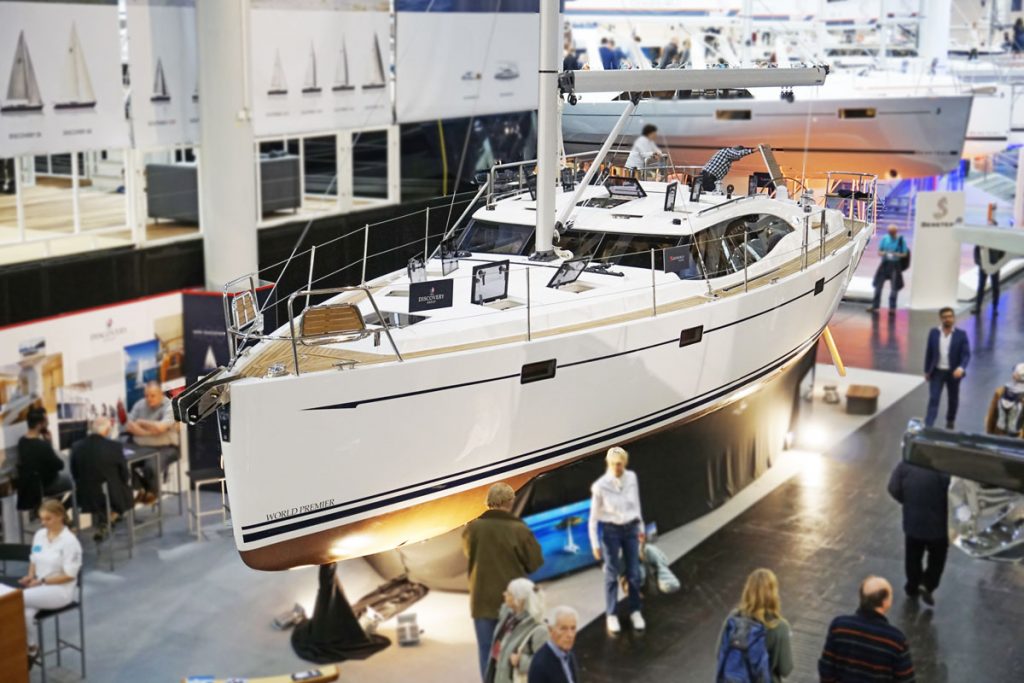
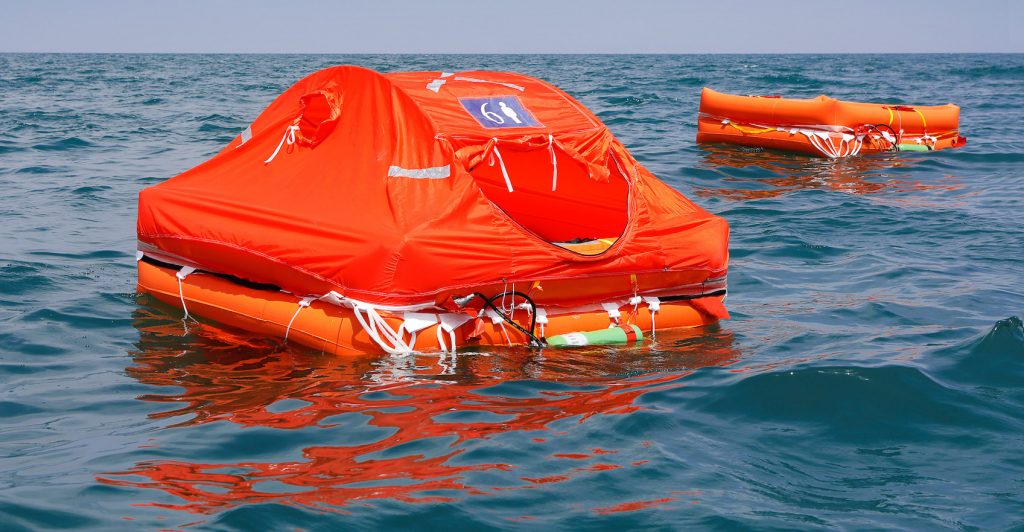
Very informative information regarding interaction with sail set via traveler, downhaul, vanguard and halyard tension,